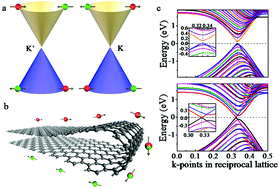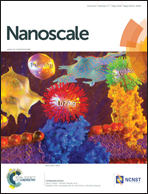Graphene homojunction: closed-edge bilayer graphene by pseudospin interaction
Abstract
Depending on the sublattices they are propagated in, low-energy electrons or holes are labeled with pseudospin. By engineering pseudospin interactions, we propose that two critical features of a junction, i.e., band gap opening and spatial charge separation, can be realized in graphene layers with proper stacking. We also demonstrate theoretically that such a graphene diode may play a role in future pseudospin electronics such as for harvesting solar energy.

- This article is part of the themed collection: 2016 Nanoscale HOT Article Collection


 Please wait while we load your content...
Please wait while we load your content...